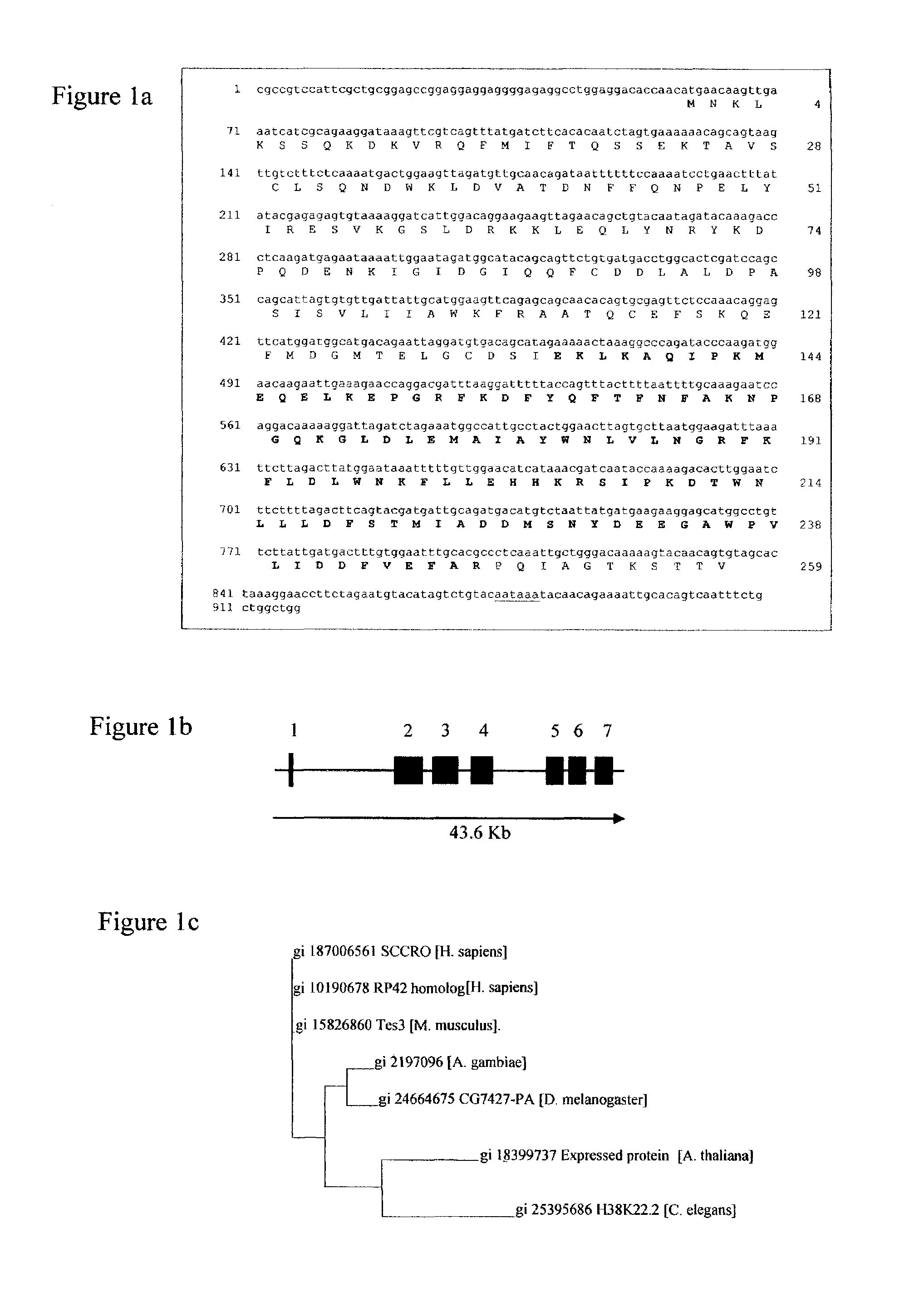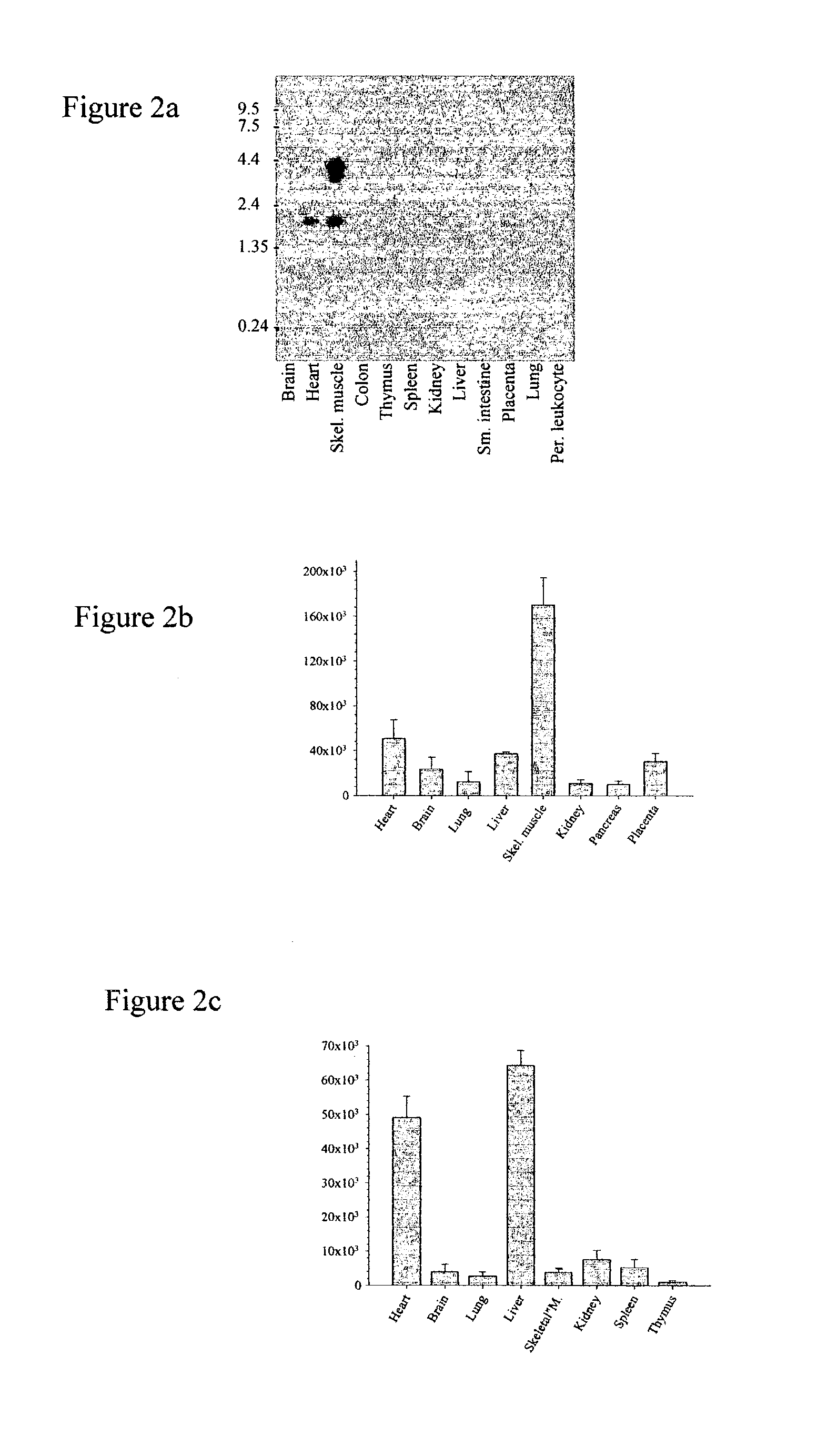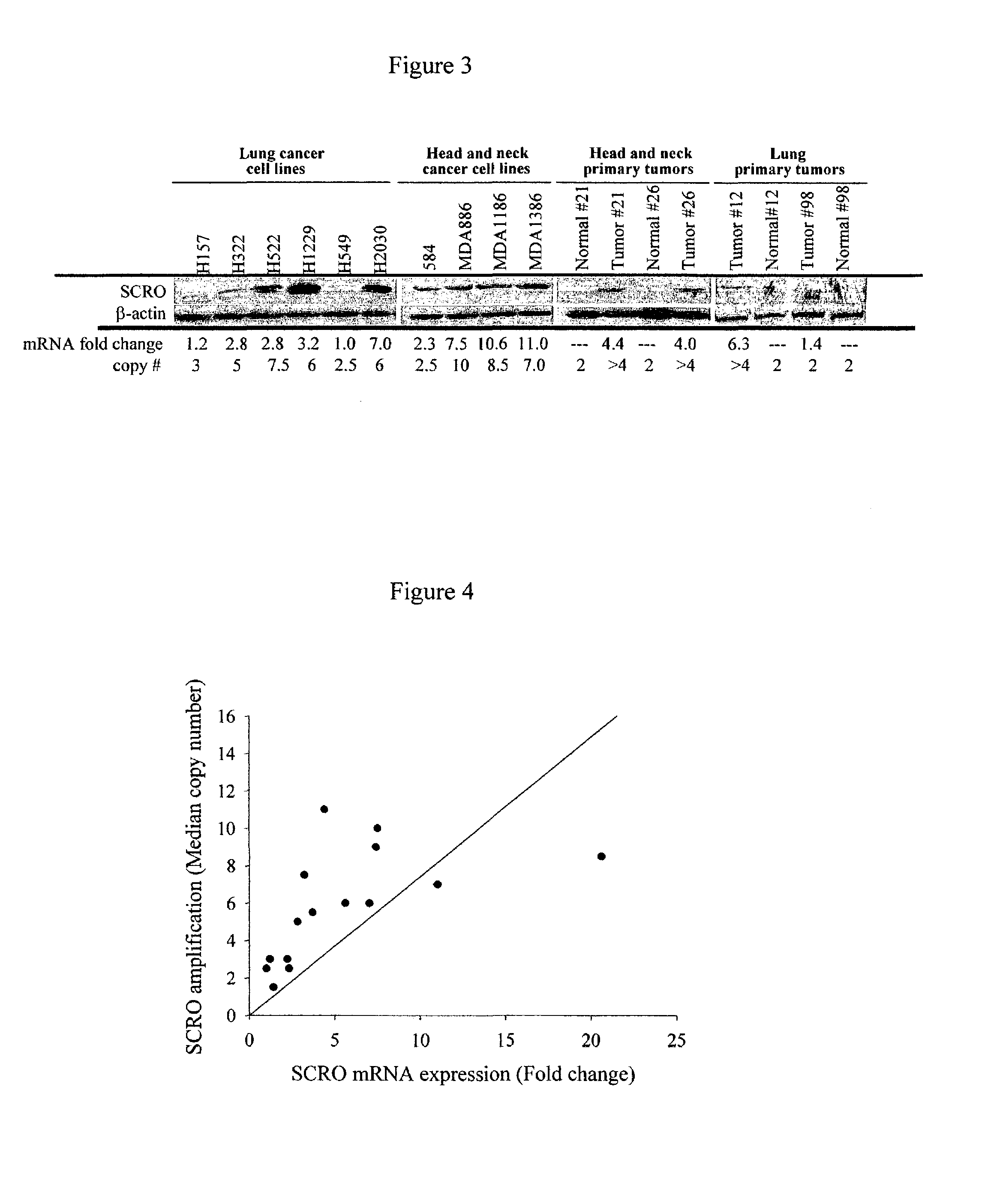Carcinoma-related genes and polypeptides and methods of use thereof
a carcinoma and gene technology, applied in the field of new nucleic acids and polynucleotides, can solve the problems of ill-defined gene targets driving the selection of 3q amplification genes, and achieve the effects of inhibiting cell growth, reducing the expression of oncoseq nucleotide sequences, and high copy number of oncoseq genes in cells
- Summary
- Abstract
- Description
- Claims
- Application Information
AI Technical Summary
Benefits of technology
Problems solved by technology
Method used
Image
Examples
examples
A. Methods and Materials Employed in the Examples
[0384]Cell lines and tumor tissues. Eleven human cell lines derived from head and neck squamous cell carcinomas (584, MDA686, MDA886, MSK921, MSK922, MDA1186, MDA1386, 1483, MDA1586, MDA1986, and MSKQLL2) and one cell line derived from premalignant oral epithelium (MSK Leuk1) were used in the present study. Of these cell lines, MSK921, MSK922, MSKQLL2, and MSK Leuk1 were established at Memorial Sloan-Kettering Cancer Center; MDA686, MDA886, MDA1186, MDA1386, MDA1586, and MDA1986 were established at The University of Texas M. D. Anderson Cancer Center (Houston, Tex.); and 584 and 1483 were established at Wadsworth Laboratories, New York State Department of Health (Albany, N.Y.). (See Singh, B. et al. (2001) Cancer Res 61, 4506-13).
[0385]Cell lines derived from lung carcinomas, 3T3 cells, and HeLa cells were purchased from the American Type Culture Collection. Primary tumors from head and neck and lung cancers were collected from patien...
experimental examples
B. Experimental Examples
Example 1
[0414]Gene identification and sequence analysis. Using a positional cloning approach, the duplication region at 3q26-27 was refined to within three highly amplified and overlapping YAC clones (803E3, 940H11, 923E6) at chromosomal band 3q26.3. The size of the genomic segment contained within these YAC clones was determined by pulse field gel electrophoresis (PFGE) and spanned ≈2 Mb. A bacterial artificial chromosome (BAC) contig was then constructed covering the 2 Mb genomic segment. Dual color fluorescence in situ hybridization (FISH) was utilized to further refine the minimal region of duplication. FISH analysis of several BACs prepared from 5 head and neck squamous cell carcinoma cell lines containing 3q26-37 duplication revealed two recurrent peaks of duplication in all cell lines contained within BAC clones 202B22 and 386M7, with mean copy numbers of 10.6 and 10.3, respectively. (See Singh et al., 2002.) Sequence analysis of the genomic insert in...
example 2
Tissue Expression of Oncoseq Nucleic Acids
[0418]Hybridization of a full-length probe of the Oncoseq sequence to a multi-tissue northern blot revealed high-level gene expression in heart and skeletal muscle, with three predominant transcripts (FIG. 2a). Low level expression was seen in brain, kidney, small intestine, placenta and lung. The expression level and relative ratios of these apparent splice forms varied from tissue to tissue. Gene expression was confirmed by real-time RT-PCR in adult and fetal tissues. The highest expression in adults was seen in skeletal muscle and heart, similar to findings by northern blot. In fetal tissues, the expression was highest in liver and heart, with lower level expression present in other tissues (FIG. 2b). Expression of Oncoseq cDNA by in vitro transcription and translation yielded a protein having the predicted size, approximately 30 kDa. In addition, Western blot analysis confirmed the presence of an Oncoseq protein product of predicted size...
PUM
| Property | Measurement | Unit |
|---|---|---|
| Tm | aaaaa | aaaaa |
| half life | aaaaa | aaaaa |
| temperature | aaaaa | aaaaa |
Abstract
Description
Claims
Application Information
 Login to View More
Login to View More - R&D
- Intellectual Property
- Life Sciences
- Materials
- Tech Scout
- Unparalleled Data Quality
- Higher Quality Content
- 60% Fewer Hallucinations
Browse by: Latest US Patents, China's latest patents, Technical Efficacy Thesaurus, Application Domain, Technology Topic, Popular Technical Reports.
© 2025 PatSnap. All rights reserved.Legal|Privacy policy|Modern Slavery Act Transparency Statement|Sitemap|About US| Contact US: help@patsnap.com



